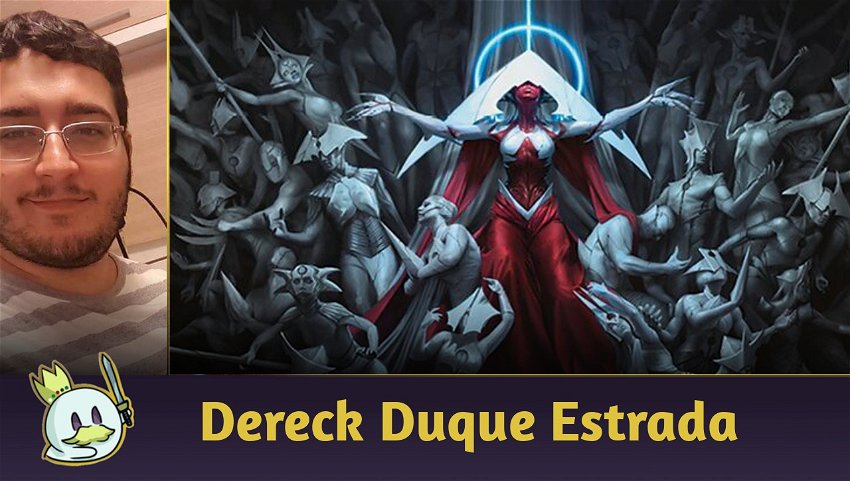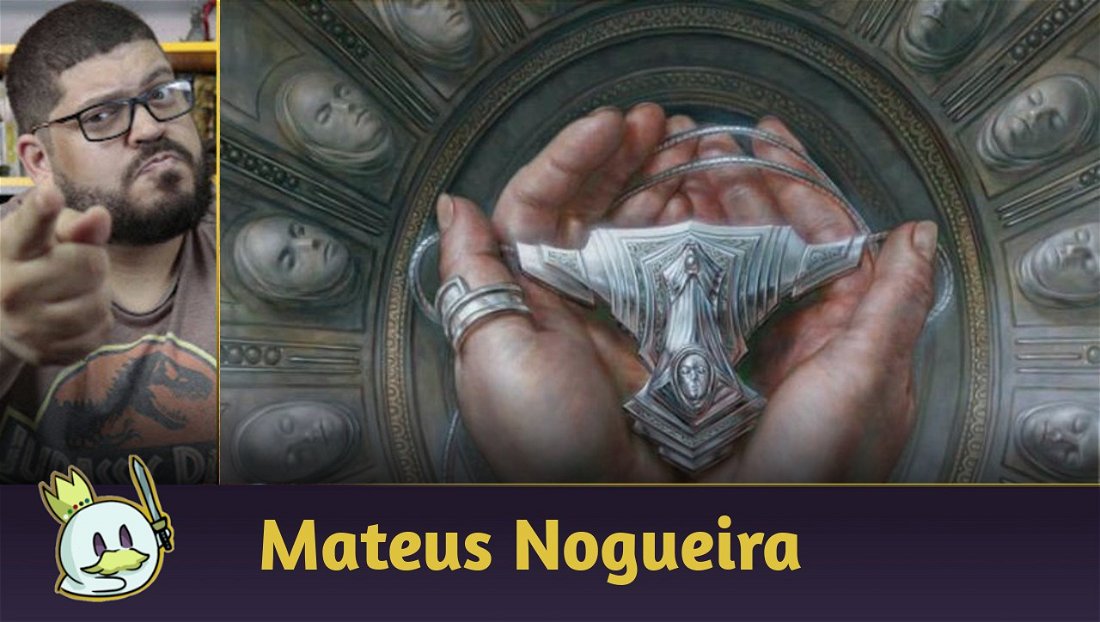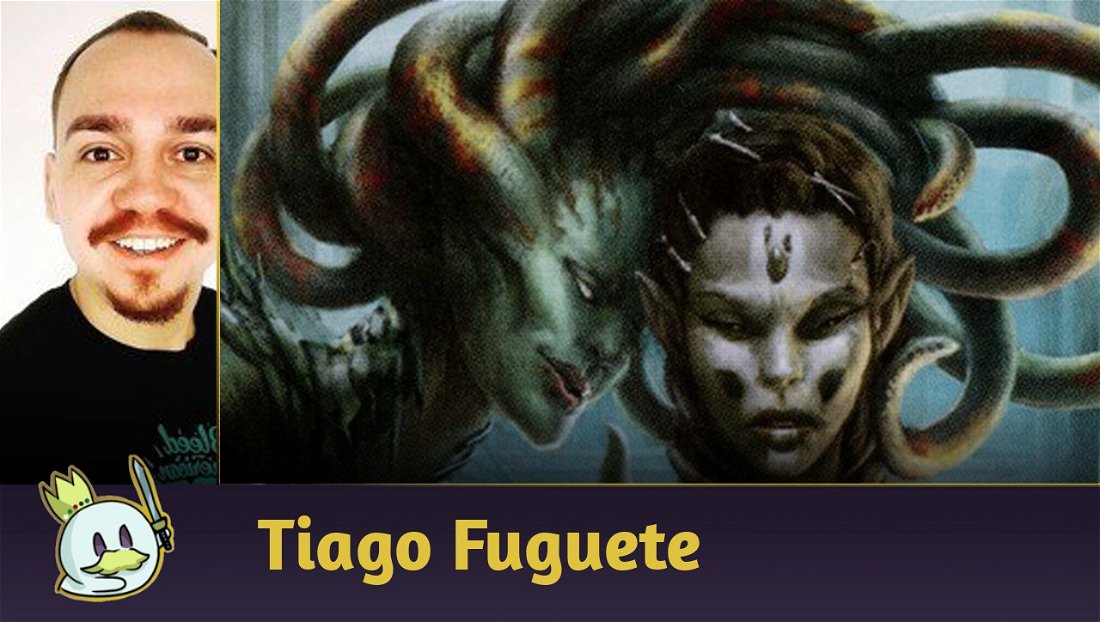Another season of spoilers has finished, discussions and debates begin about which cards from Phyrexia: All Will Be One will impact the formats, which decks can appear, which lists will be updated and, mainly, which cards to open in Limited formats.
About the Pre-Release - Phyrexia: All Will Be One
Phyrexia: All Will Be One's Prerelease is set for 02/03/2023, launching at Magic Arena on 02/07/2023. Knowing that this is a moment where the focus on Limited formats is greater, let's analyze the set.
Ad
We will concentrate on providing information about archetypes, removals, fixers and best common / uncommon cards, so that you can have a plan when practicing your deck building, having a better experience in your first contact with the set.
Let's talk about Phyrexia: All Will Be One!
Mechanics
With the arrival of the new set, we have another group of mechanics related to it. To understand the synergies, let's first review the mechanics.
Toxic
Toxic is an update to the Infect mechanic from Scars of Mirrodin. Creatures with Toxic deal normal damage to opponent, but also add poison counters to opponent according to the toxic number when they deal combat damage.
The number of counters will be according to the ability level, as we see in the example below:

Nimraiser Paladin will put 2 poison counters, and if the opponent reaches 10 counters, they loses the game.
Corrupted
Corrupted is a mechanic correlated with Toxic. Basically, effects or abilities that only occur if the opponent has three or more poison counters.
Example:

Oil Counters
They are counters that are used to activate certain abilities, having effects triggered or static by their presence.
Example:

For Mirrodin!
For Mirrodin! is an equipment-oriented ETB triggered ability, where when the equipment enters the field, it creates a creature token and attaches itself to it.

Proliferate
Proliferate is a familiar mechanic that reappears in the set. It relies on choosing permanents and/or players and then increasing another counter of each type they already have.
Example:

Archetypes
The archetypes are the strategies formed by color combinations. Usually they are divided into pairs, but they may have combinations of three colors as in Streets of New Capenna or as in Ikoria: Lair of Behemoths
.
In Phyrexia: All Will be One, the pairs will serve as the basis for defining the archetype. Remembering that this basis is a north to guide us in the structure of the deck, allowing the cards to work together as a whole within a strategy and not just as an isolated piece.
Let's understand the combinations and what they do.
Boros – Equipment
For a creature-based format, utilizing point equipment can be very helpful, as it is a resource that often provides power asymmetry, evasion or protection. But when it is necessary to play around that, the deck has difficulty balancing the amount of equipment and creatures – after all, without having where to attach the equipment, they are useless, most of the time.
“For Mirrodin!” change this concept. Allows for consistency in deck building based on this theme, since equipment enters the battlefield and creates a 2/2 token. On the other hand, equipment with this ability costs more to equip.
Ad
To support the archetype, we have creatures that reduce costs; Bladegraft Aspirant, Bladehold War-Whip; Spells with reduced cost per controlled equipment (Affinity for Equipment); Oxidda Finisher and Rebel Salvo.
Cards like Jor Kadeen, First Goldwarden, Kemba, Kha Enduring or Rhuk, Hexgold Nabber can be a good reason to be in the archetype.
Best Commons:

Best Uncommons:

Rakdos – Aristocrats/Oil Counter
The red and black combination has two types of interactions: oil counters and effects when your creatures die.
The oil counters have several functions, being a very versatile mechanism that allows a range of functions while it is powered. The key point is the cards that work as fuel for mechanics, such as Churning Reservoir, Magmatic Sprinter and The Monumental Facade, which insert counters directly.
Another way of adding more counters is through proliferate. In the case of the BR combination, proliferate occurs through interactions with the graveyard, either by sacrificing creatures (Blightbelly Rat), removing the opponent's creature (Volt Charge) or reanimating yours (Vat Emergence).
Cards like Archfiend of the Dross, Exuberant Fuseling, Drivnod, Carnage Dominus or Ichorplate Golem can be good reasons to be in the archetype.
Best Commons:

Best Uncommons:

Golgari – Poison Counters
The strategy of the colors black and green aims to close the game with poison counters. For that, it has a range of cards that manage to go over the opponent's defenses and evolve the number of counters, either through abilities or by combat.
Paladin of Predation and Tyrranax Rex are good finisher options to flesh out the board and be a considerable threat for the amount of counters they place, in addition to the damage.
Necrogen Rotpriest, Bloated Contaminator and Venerated Rotpriest are pieces that optimize the strategy by accelerating the amount of counters the opponent receives, Necrogen Rotpriest in combination with Venerated Rotpriest make a particularly strong synergy, especially if you can protect both from removals.
Glissa Sunslayer is a piece that can be worth being in the colors. It will hardly lose combat trades, often being left free to attack the opponent's life points and with that choosing the best ability to use.
Best Commons:

Best Uncommons:

Selesnya – Toxic Aggro
For the green and white combination, we have a more aggressive game plan. The idea is to attack with volume and use cards that either replace themselves on the board, like Crawling Chorus, or that generate a body advantage on the board, like Infested Fleshcutter or Basilica Shepherd.
Ad
In this type of strategy, pumps for your board and evasion can be very important to close the game.
Plated Onslaught, Mite Overseer and Slaughter Singer are some options on how to power up your board, while Swooping Lookout, Flensing Raptor and Bloated Contaminator take care of dealing more damage.
Beyond that point, creatures with toxic can help shorten the game. Skrelv's Hive and Mondrak, Glory Dominus make a very good synergy for this path.
White Sun’s Twilight turns out to be a considerably strong card, giving you a considerable advantage of bodies on the board at the end of the game.
In addition, Melira, the living cure is an excellent drop two, with a very aggressive body, protects your best creatures from removals and prevents a large evolution of poison counters on you while it is on the board.
Best Commons:

Best Uncommons:

Simic – Proliferate
In the green and blue combination we have an interaction with proliferate working with poison and/or oil counters.
Here we have a strategy of using creatures with toxic to assign the first poison counters on the opponent. Then, using oil counter abilities as support, either to provide evasion with Atmosphere Surgeon, grow threats with Predation Steward or tapping opponent's creatures with Tamiyo's Immobilizer.
Then, it is possible to increase counters with proliferate, allowing new activations of Oil abilities and increasing the poison counters on the opponent. Ezuri, Stalker of Spheres, Tekuthal, Inquiry Dominus or Bloated Contaminator are cards that suggest the Simic combination.
Best Commons:

Best Uncommons:

Izzet – Oil Counter / Noncreature
The blue and red color combination work along the lines of interactions of noncreature spells and oil counters, typically creating counters when casting spells.
Decks are characterized by a smaller amount of creatures and a lot of synergy with non-creatures spells while carrying many removals, bounces, cantrips and protection (fundamental in decks of few creatures).
Having cards like Ovika, Enigma Goliath, Capricious Hellraiser, Mindsplice Apparatus, All Will be One or Mercurial Spelldancer in the pool can be a great reason to utilise the Izzet combination.
Best Commons:

Best Uncommons:

Dimir – Proliferate
The idea of the blue and black combination go around the proliferate mechanic, making use of cards like Scheming Aspirant, Tekuthal, Inquiry Dominus, Venser, Corpse Puppet, and using triggered abilities to generate more value while increasing oil or poison counters.
Ad
As proliferate is a mechanic that depends on the existence of counters to take effect, cards with oil counters, toxic or planeswalkers are very useful in the deck composition for this strategy.

Best Commons:

Best Uncommons:

Grull – Aggro / Oil Counter
The green and red color combination will focus on having abilities activated by oil counters or that care for how many permanents have the same counters.
This combination targets an aggro game plan, making use of oil counters to gain advantages on the board's strength scale. Evolved Spinoderm and Urabrask's Forge are examples, with Tyrranax Rex , Zopandrel, Hunger Dominus and Thrun, Breaker of Silence as options for good finishers.
Cards like Migloz, Maze Crusher, Cinderslash Ravager, Ichorplate Golem point to the archetype.
Best Commons:

Best Uncommons:

Azorius – Artifacts
The blue and white combination has interaction with the amount of artifacts in the field and generating effects.
Encroaching Mycosynth allows you to maximize effects by ensuring all nonland permanents are artifacts, Eye of Malcator, Malcator, Purity Overseer and Tamiyo's Logbook are some examples that benefit from this.
Since Mite tokens are all artifacts, creatures that spawn those tokens also contribute to the archetype.
Cards that point to a tendency towards this combination are Malcator, Purity Overseer, Cephalopod Sentry, and Tamiyo's Logbook
Best Commons:

Best Uncommons:

Orzhov – Corrupted
In the black and white combination, we have interactions focused on growing the poison counters to activate effects of the corrupted mechanic.
The strategy is to reach three poison counters and generate value after activating corrupted requirements. For that, evasive creatures, like Flensing Raptor, or ones that make board volume, like Mondrak, Glory Dominus, are essential.
Cards like Vivisection Evangelist, Skrelv's Hive or The Seedcore are good pointers to go with in the combination.
Elesh Norn, Mother of Machines also fits well for the ETB effects we have, being able to generate double effects and optimize abilities, in addition to being a very strong body.
Best Commons:

Best Uncommons:

Note
All colors in the set have cards that can fit into others combination of colors and can go up to three colors in the same archetype.
Ad
For example, in the noncreature archetype, we can include the white color and focus on artifacts while maintaining the game plan without having losses in the strategy.
Which is the best archetype?

Fixers
One of the problems in Limited is the mana base, often being a nightmare for some players. It's important to find ways to fix the colors you're using, either with lands that generate two colors, or with artifacts / creatures that fix the problem.
Fastlands are the easiest ways to correct colors, but are only found on allied pairs.
Another land option is The Seedcore. With over 93% of the creatures being Phyrexian and in a combat-based format, a land that embraces all colors is very effective.

Other options that also serve as a ramp are Armored Scrapgorger (excellent option being able to turn into an aggressive piece while attacking the graveyard), Myr Convert, Staff of compleation and Phyrexian Atlas, these being the best options because they are colorless.
Finally, we have The Mycosynth Gardens and Prophetic Prism which filter mana, not being as efficient, but in Limited, sometimes we work with the options we have. So if you want to guarantee color access, these are options for troubleshooting the problem.

Removals
Another important point is the removals. As we have some removals in the form of -x/-x or damage, we will bring you their efficiency on the field in percentage of the creatures in the set.
But remember, a removal that reaches a lower percentage can be more effective against a certain archetype, being more efficient to have low-cost removals that hit the board you are playing against than heavy removals for bigger creatures that not necessarily you will face.
Below are the percentage rates of effectiveness of removals considering the creatures in the set.
Effectiveness of removals
Whisper of the Dross and Hazardous Blast– 19.56%
Hexgold Slash – 52.17%
Volt Charge – 60.86%
Drown in Ichor – 82.60%
Rebel Salvo and Molten Rebuke – 94.20%

Remember to keep the balance in order to have greater versatility in the answers.
It's always good to leave artifact and enchantment removals on the sideboard in case you have opponents in that you need to face and deal with this type of strategy.
Final Considerations
Ad
Here we elaborate on the main archetypes and how to take advantage of the set's synergies – with that some cards were left out, but should be included in the deck. They are cards like Phyrexian Obliterator, Phyrexian Vindicator, Nissa, Ascended Animist, Phyrexian Arena, among others, whose impact can turn the game when cast and not answered. Be sure to include them when building your deck.

But don't forget, although they are very strong, your game cannot depend only on them. Have a combination of pieces behind them to generate efficiency in your deck.
For those who will have the opportunity, an excellent prerelease, I hope this article helps! Good luck opening the boosters and remember: this is a fun time, so don't forget the Gathering.
I hope you enjoyed the article, and if you have any questions, feel free to use the comments. Thanks for reading!









— Comments0
Be the first to comment